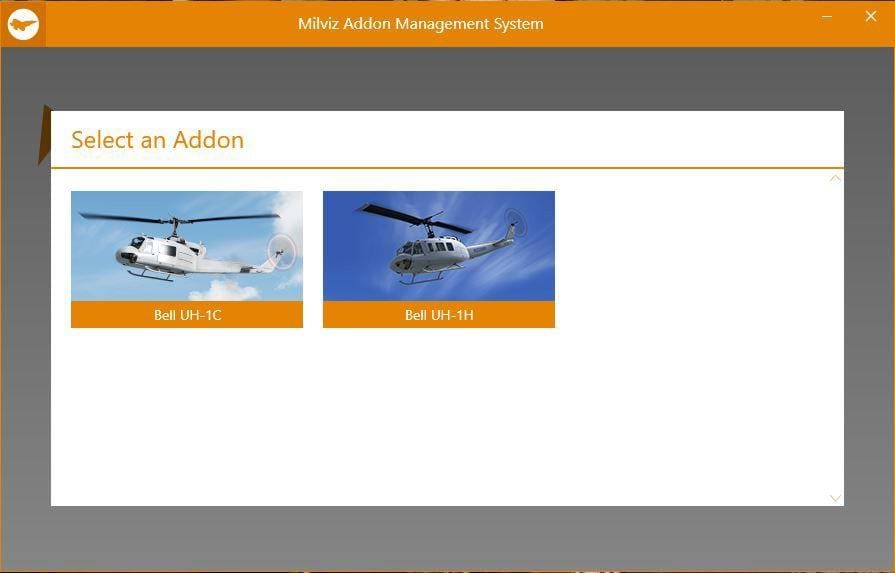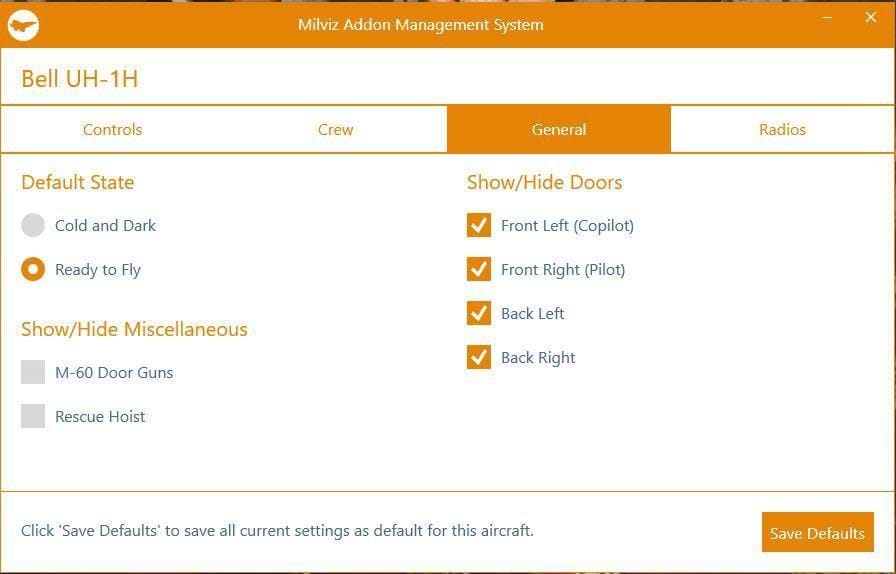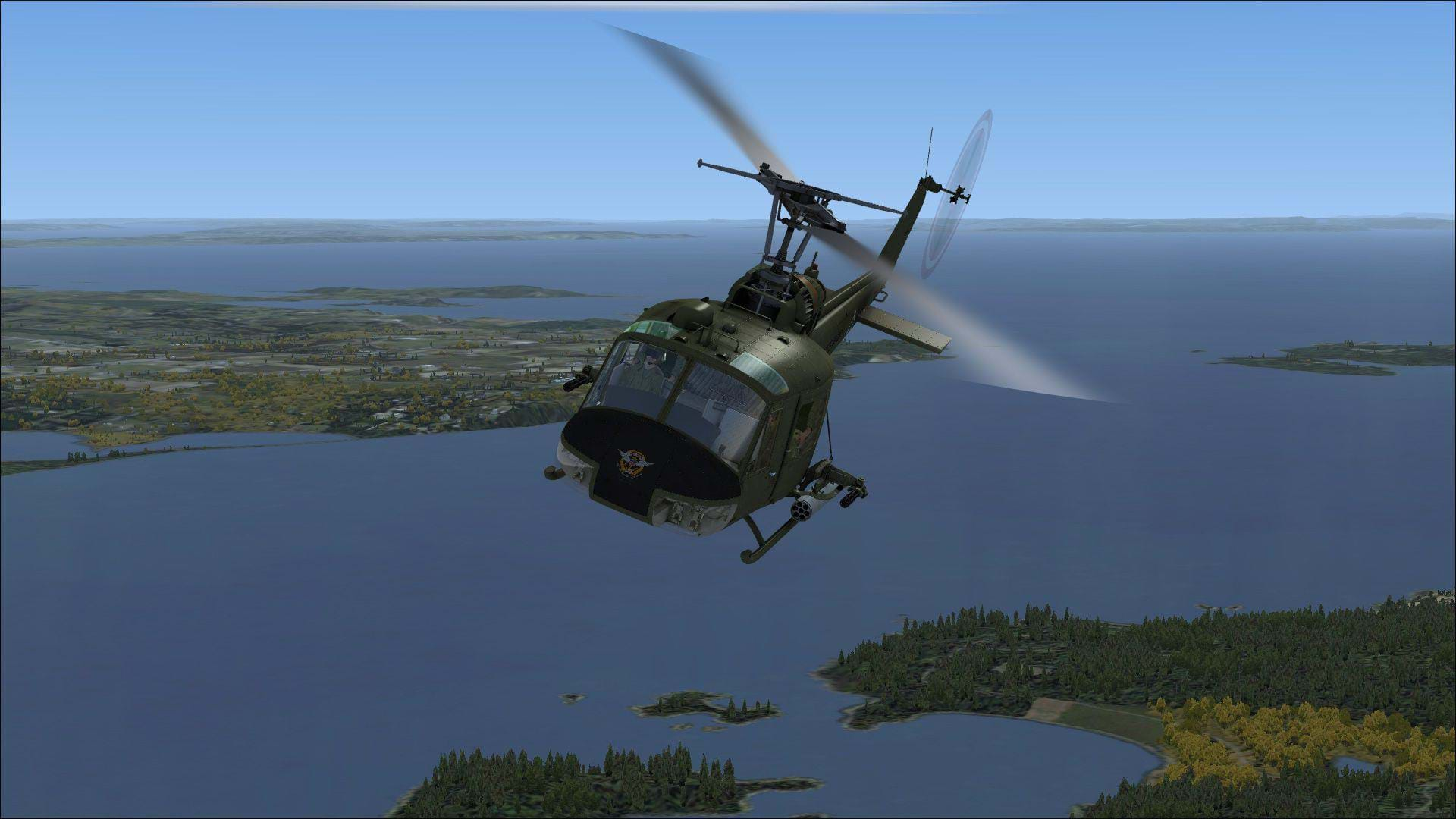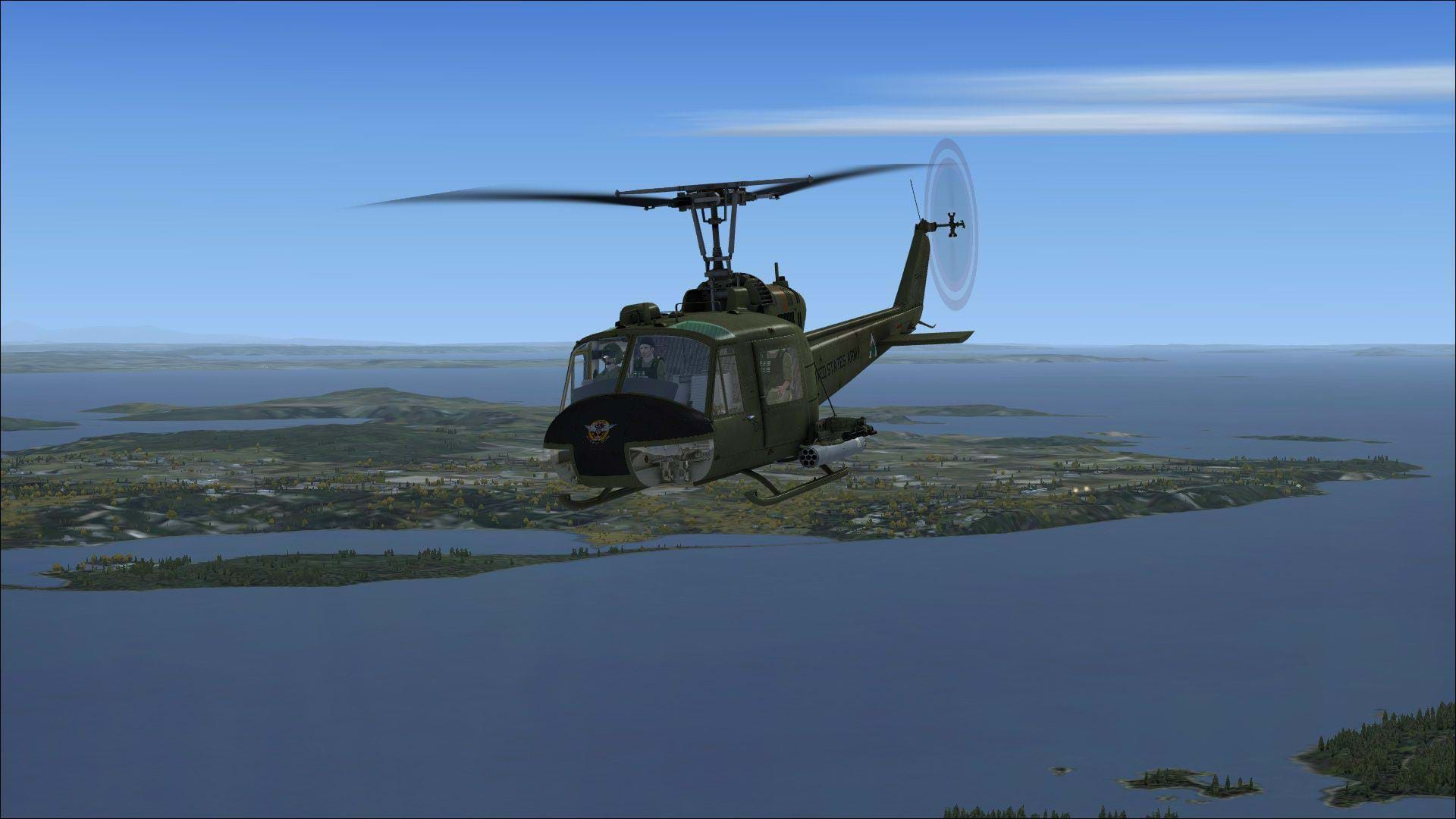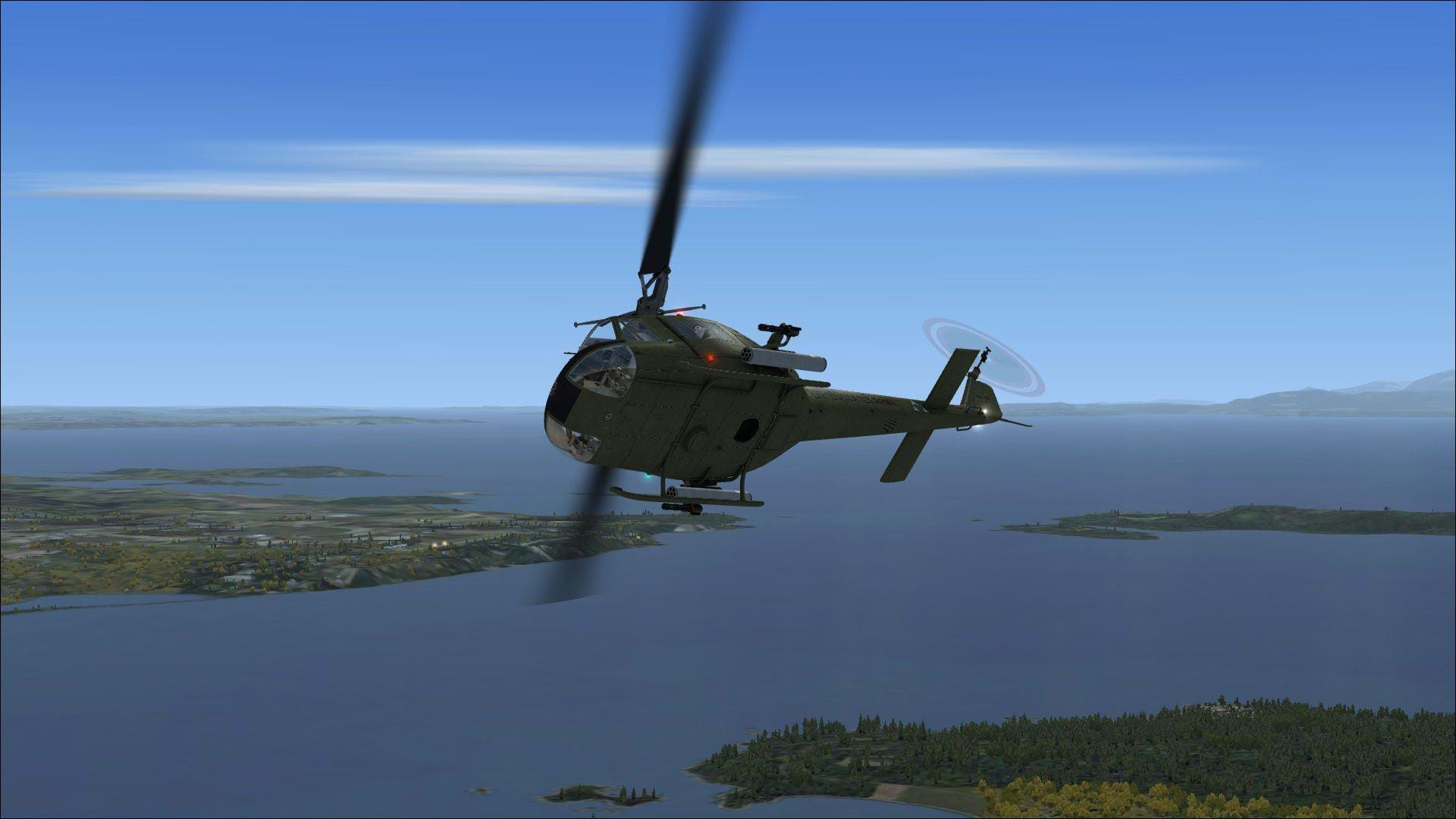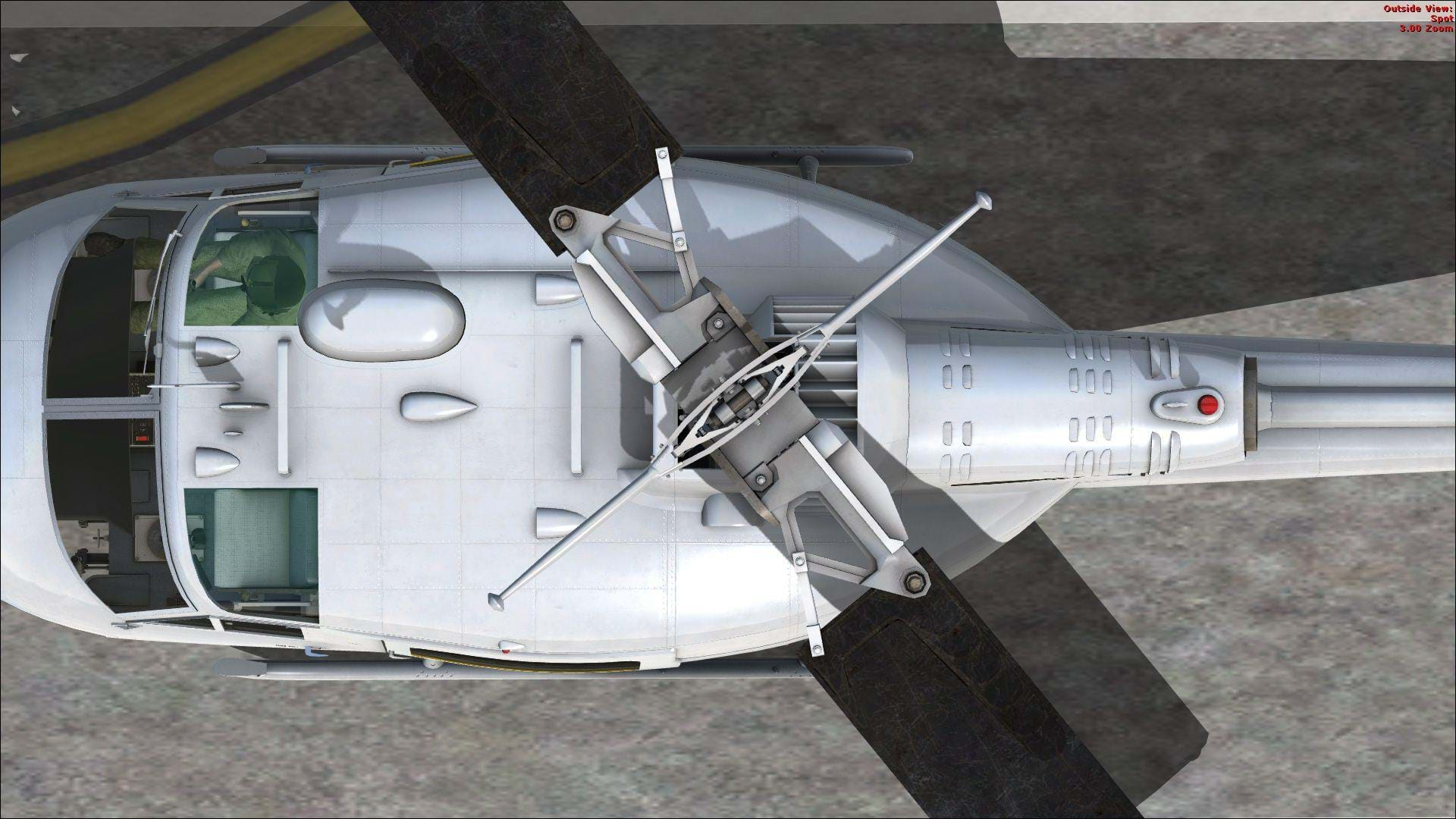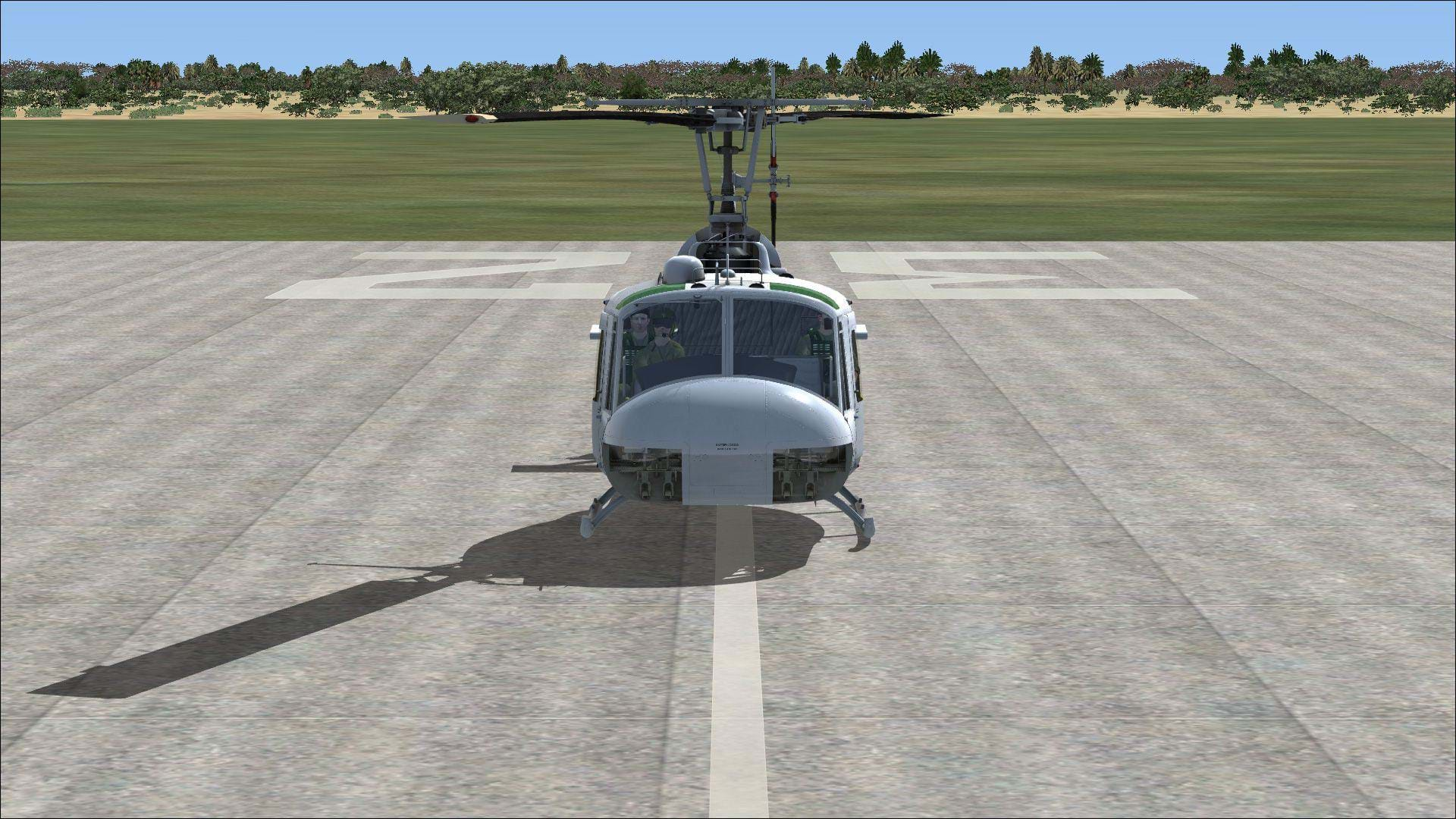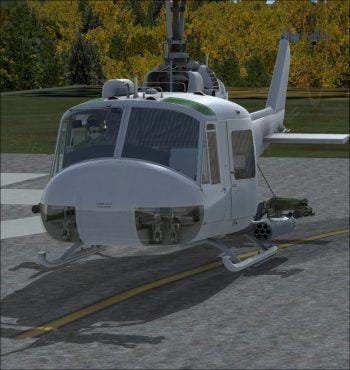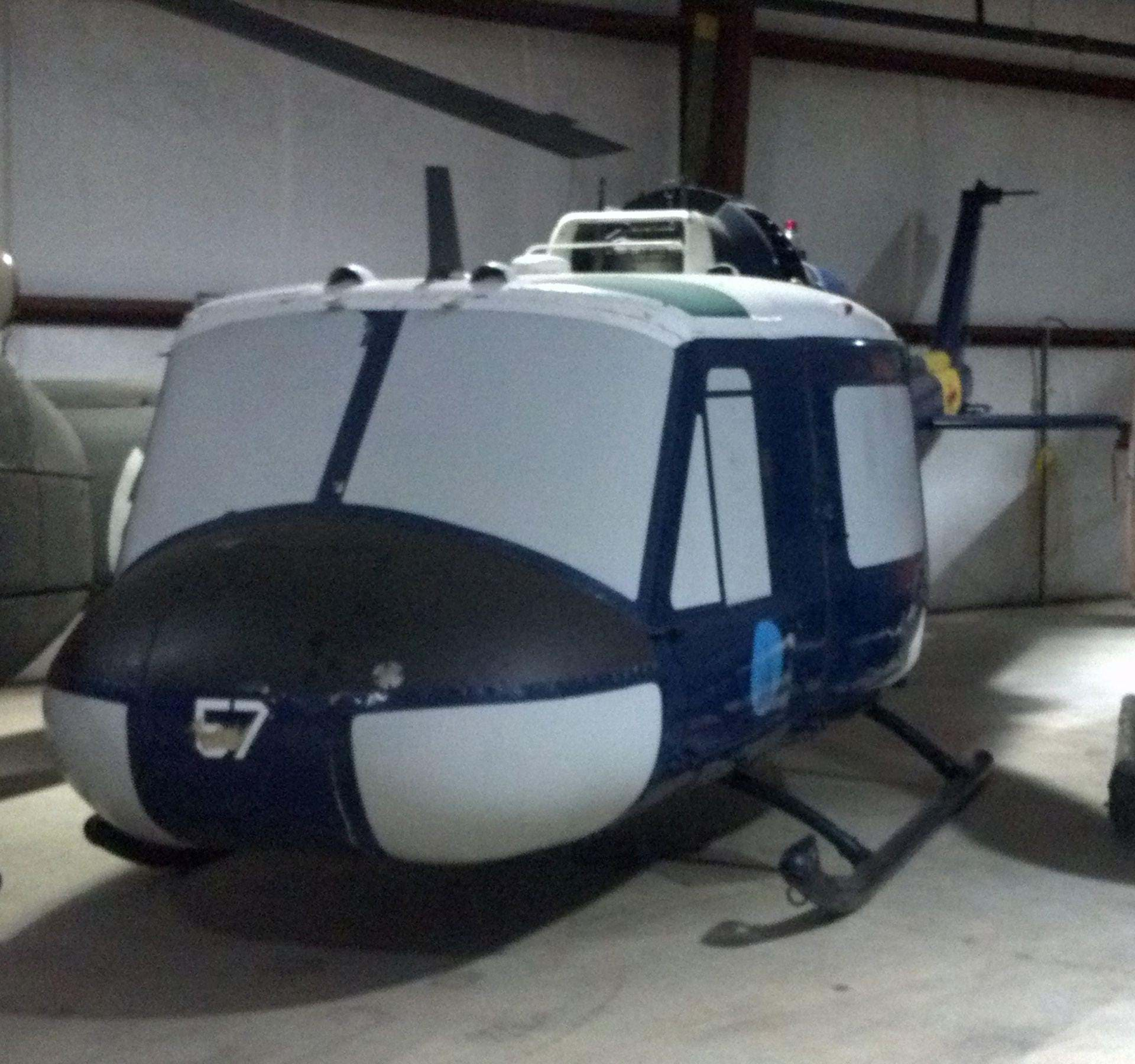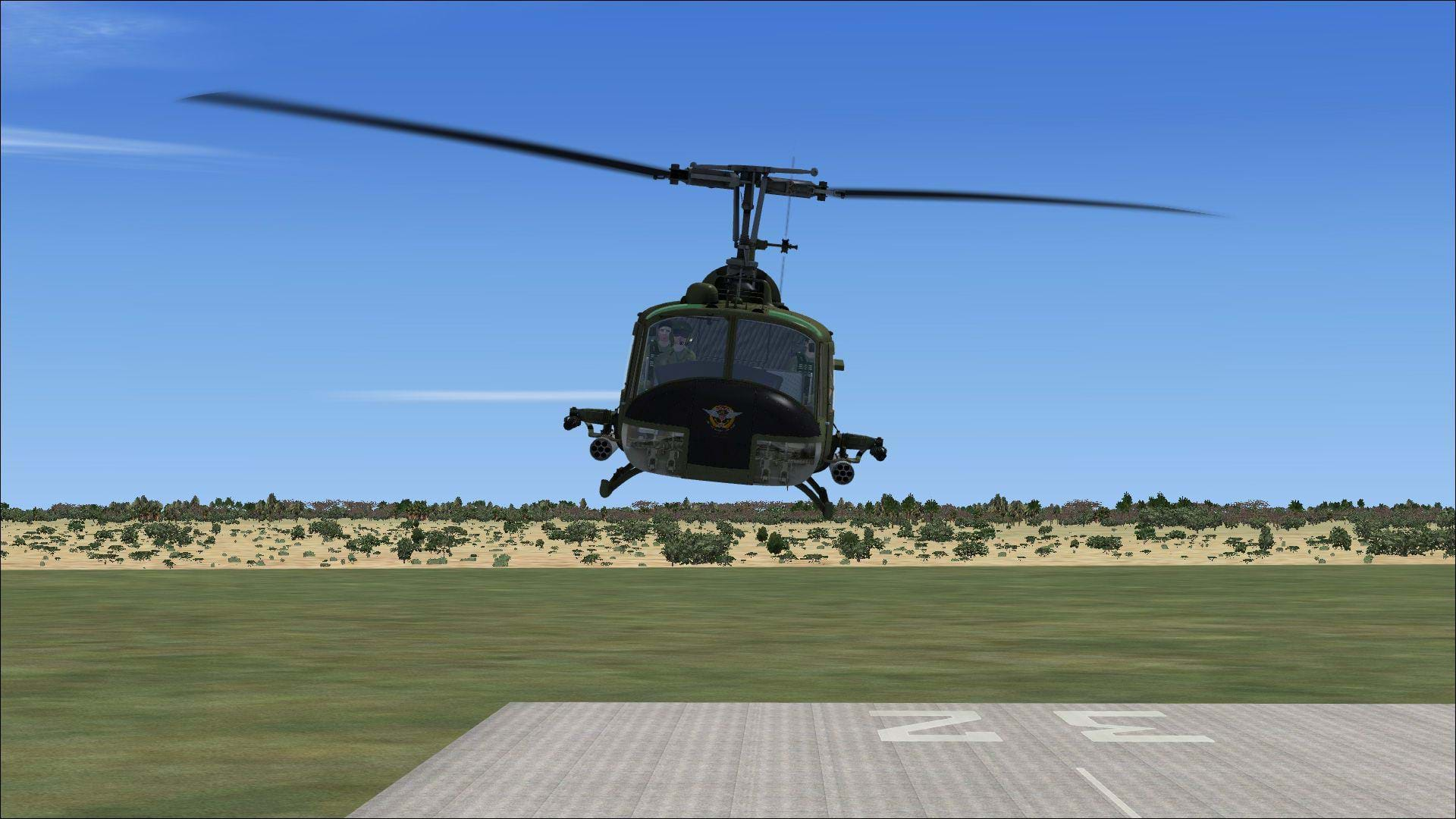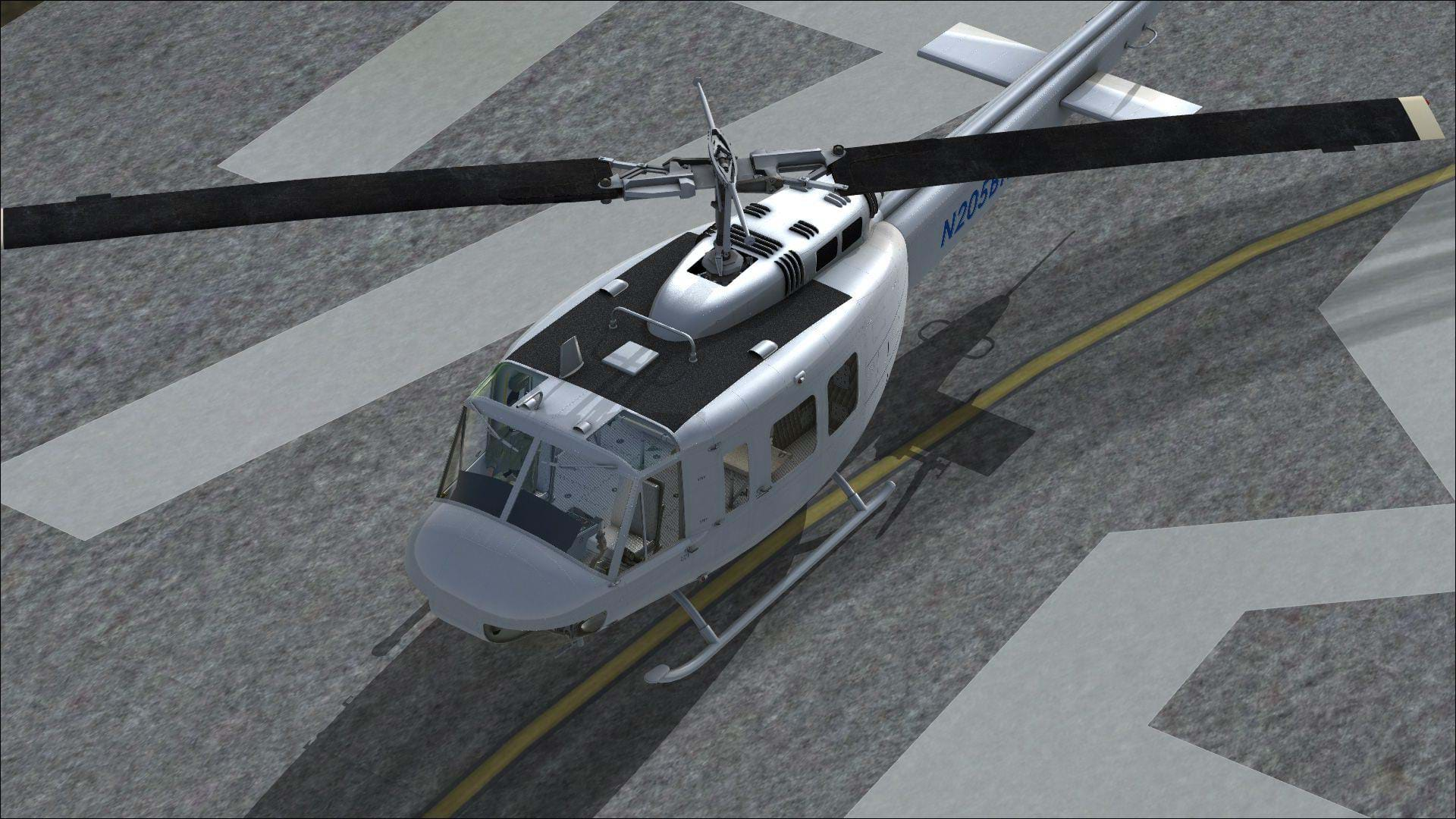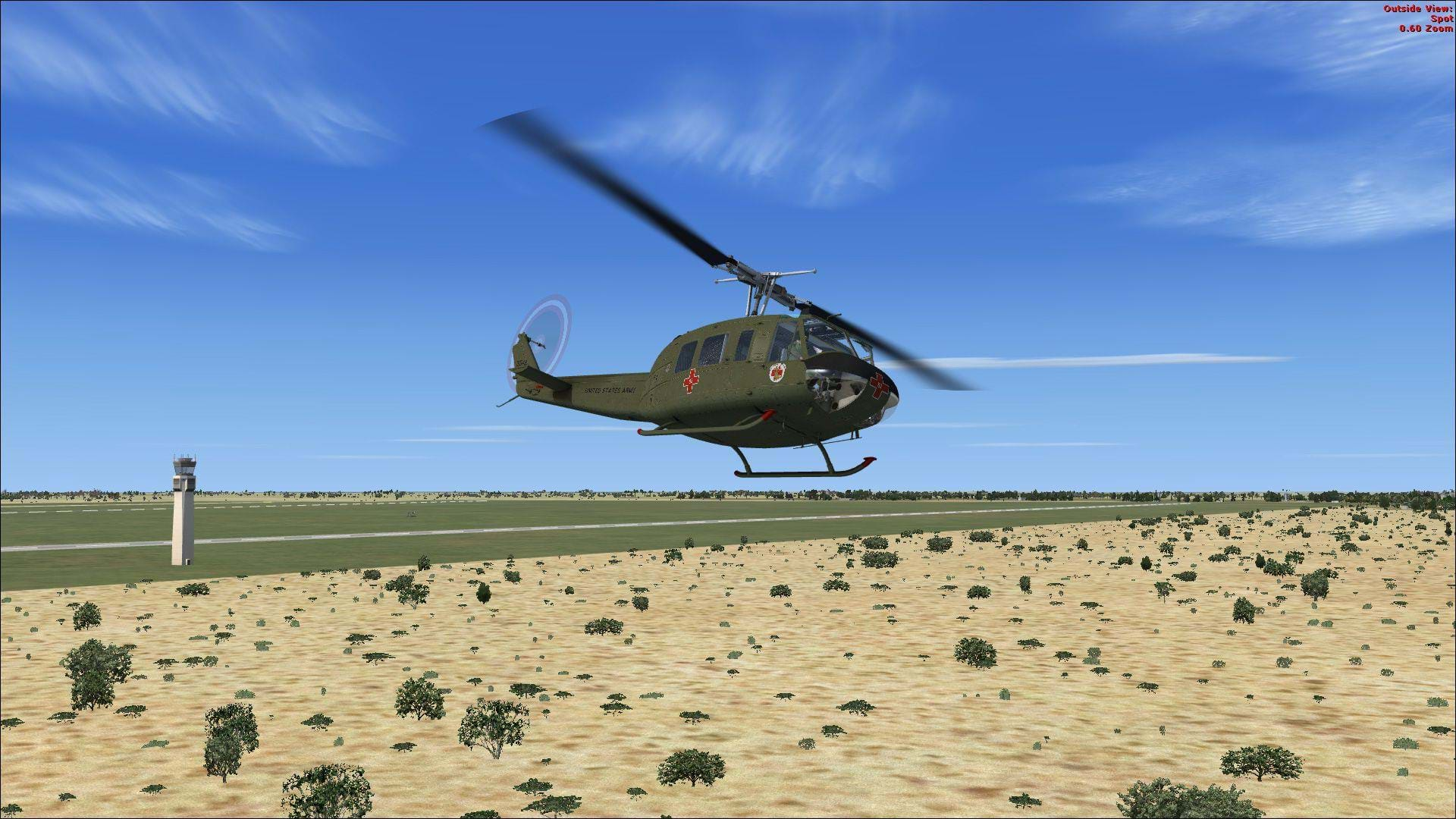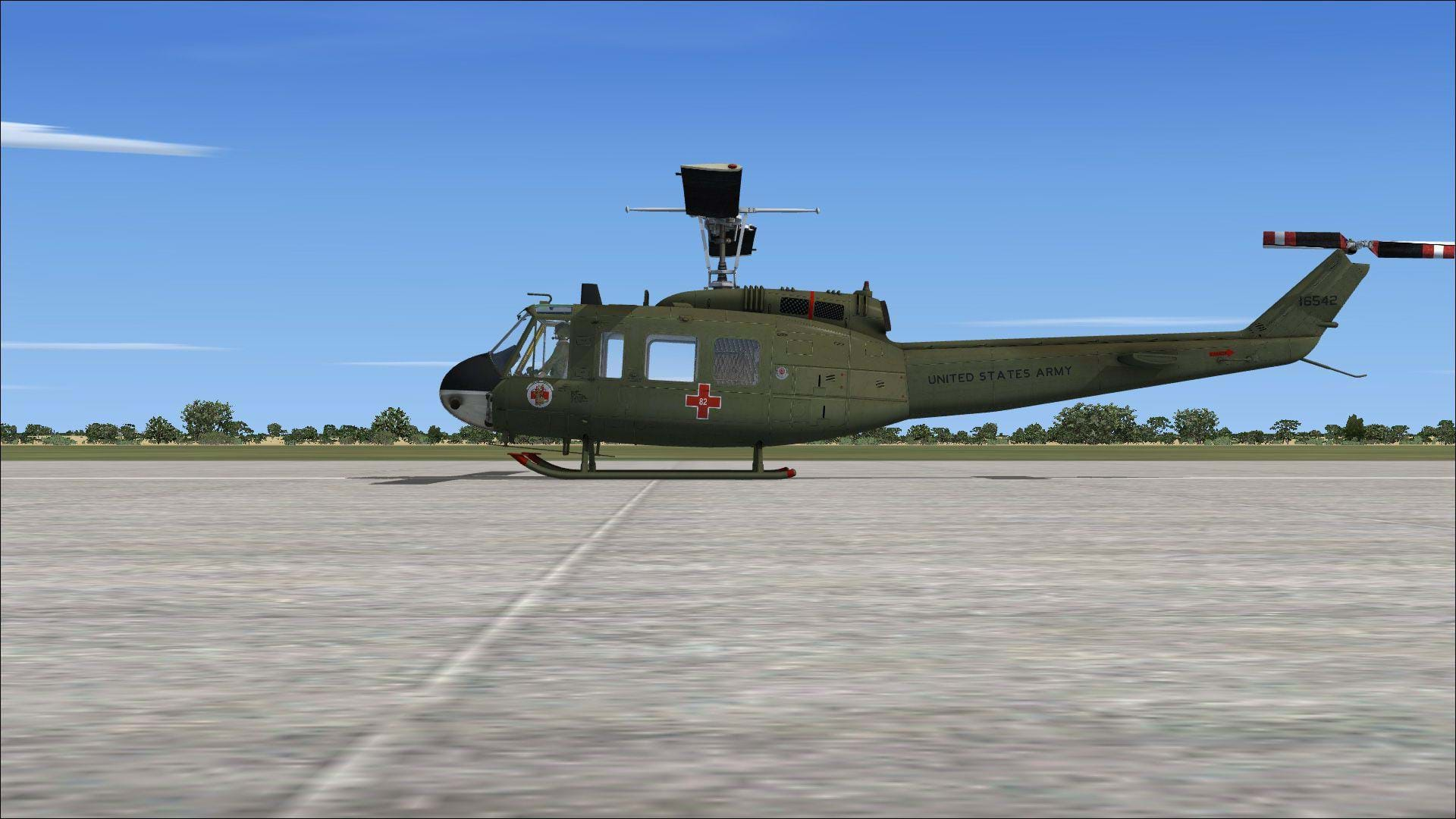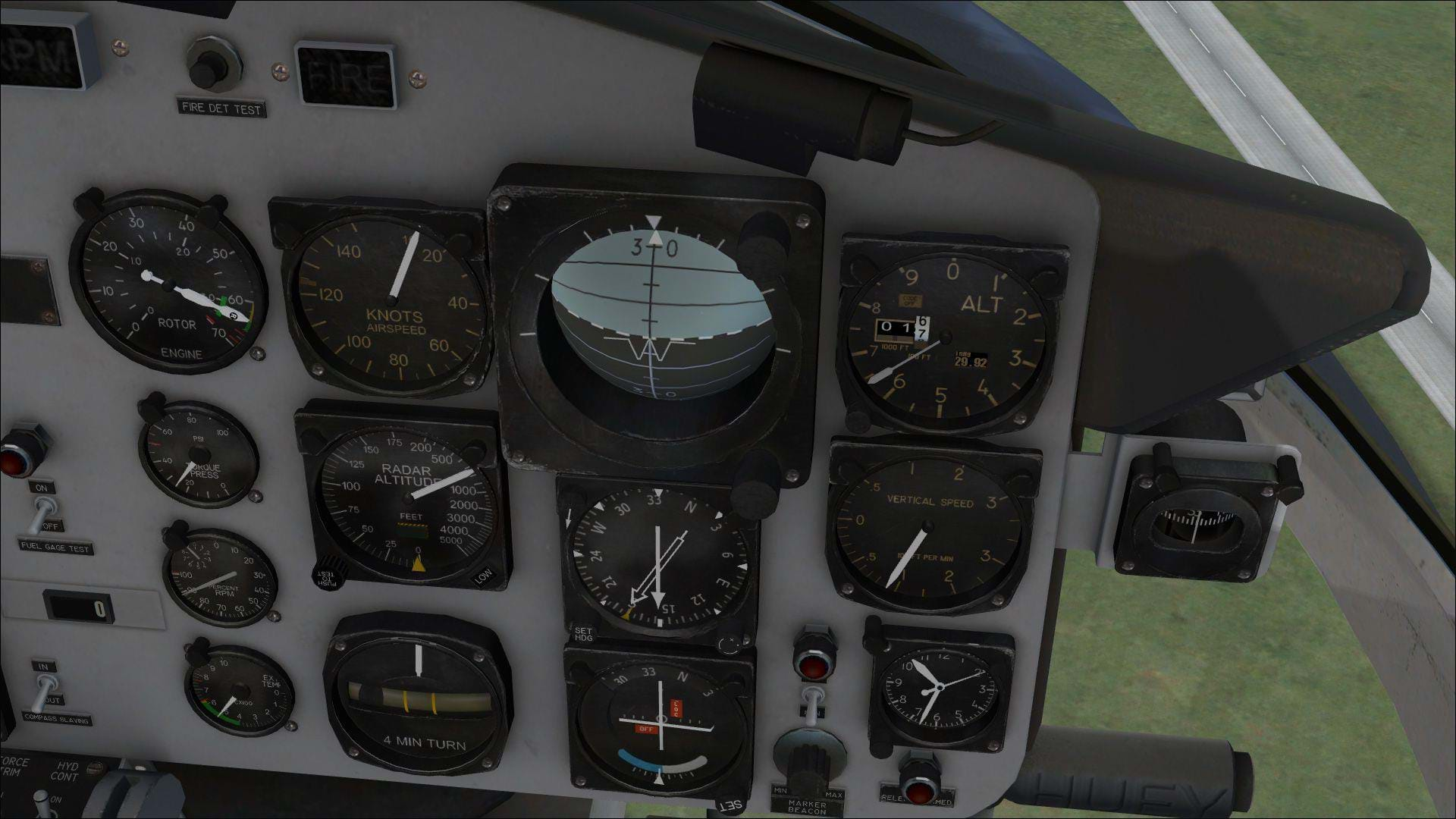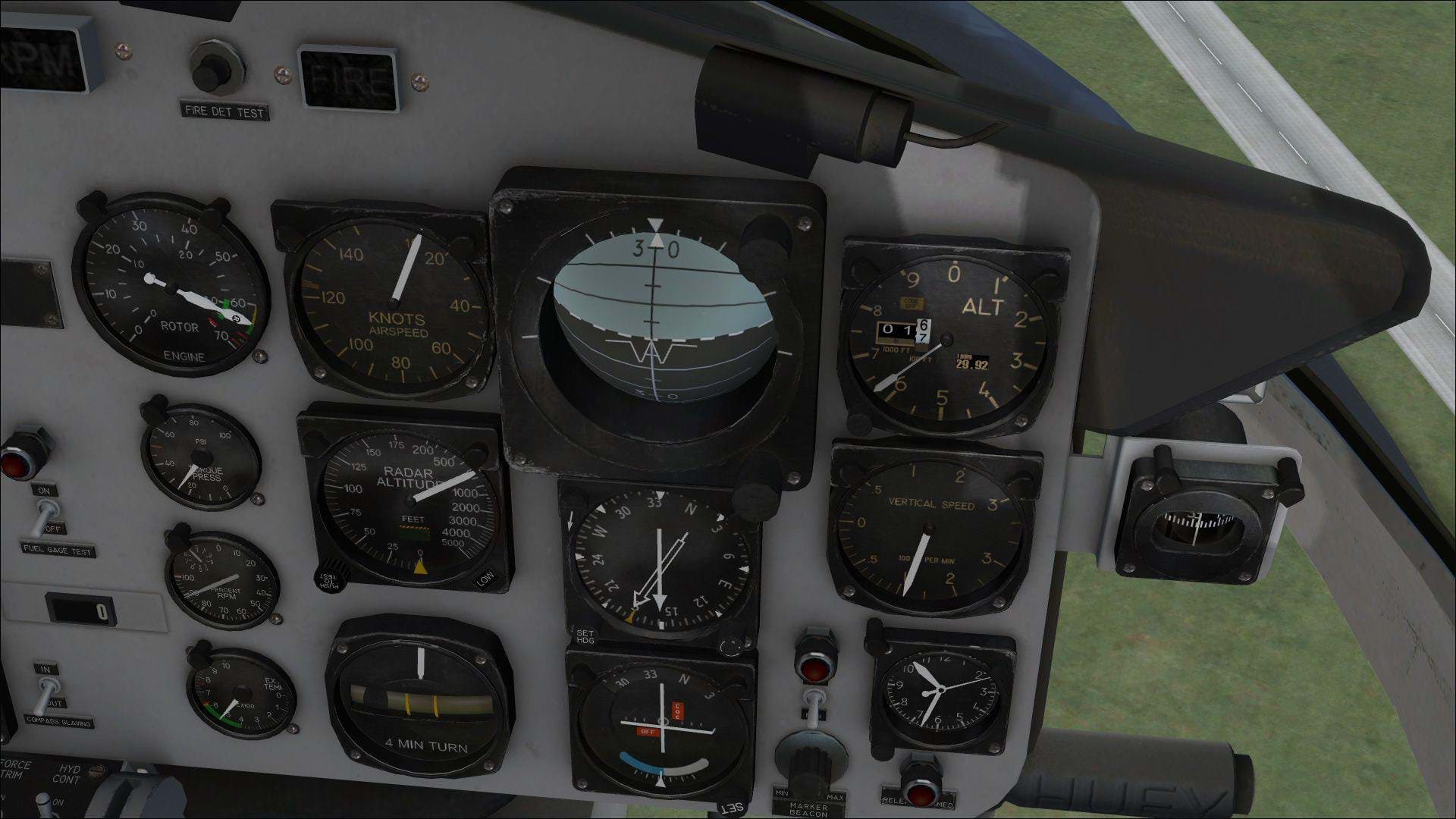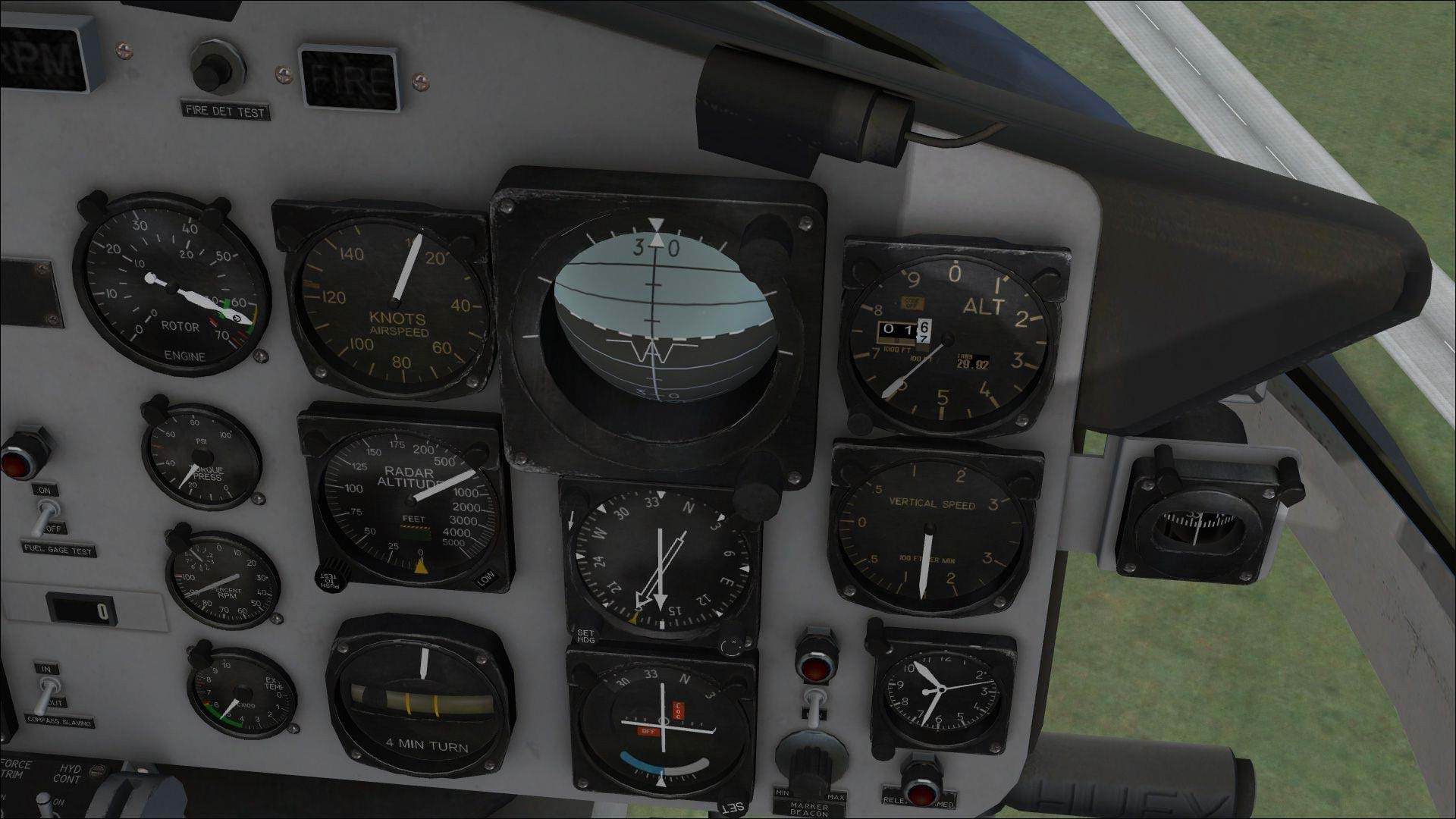This isn’t the first UH-1 review HeliSimmer has done, so I’ll skip the flowery intro. It’s not like the UH-1 needs much of an introduction anyway. However, this will be the first time we’ve reviewed a UH-1C.
Before we get into the review, let’s get one thing out of the way. Just like the two reviews of the SA342 we did for FSX and DCS, this isn’t going to be a direct comparison to any UH-1 model on other platforms. That being said, later on in the review there will be some discussion about the Huey offerings from other developers. So let’s get to it.
Installation
If you’re familiar with Milviz products, you probably already know that the installation is a little more involved that other addons. There’s an EXE file that you click to open, point it towards you FSX folder and let her rip. However, there is an added step with Milviz files that’s a little irritating: the installer and some of the components of the model are erroneously recognized as malicious software on some anti-virus programs. So Milviz recommends that you turn your Anti-Virus software off prior to downloading, and during installation of their UH-1.
Downloading and installing Milviz's products with your anti-virus enabled can lead to a less than perfect installation, and result in less functionality of the model in the sim. They also recommend that you disable User Account Controls for your FSX folder, and ensure that your FSX directory is made off limits by your Anti-Virus software. This may not be new to seasoned Milviz costumers but it might be a little off putting if you’re new to their models.
I’m not a computer science wizard, so I’m not sure what it is about their models that require such a specific computer setup prior to downloading, installing, and for continued use. Their flight simulator products are the only ones I’ve come across that interact so poorly with Antivirus programs.
Addon Management System
If you have the Milviz Bell 407 or the MD530F, you’re already familiar with the Milviz Menu Manager. For the UH-1 Redux, we get to see an updated version of that program in the form of the MilViz Addon Management System.
For those of you not familiar, the Menu Manager, and Addon Management System is a program separate from FSX where the user can customize the model prior to starting FSX. This allows you to add or remove doors, weapons, rescue hoists, and crew members. It also gives the user the options to change the default state from cold and dark, to ready to fly.
First Look: UH-1C
As far as I know, this is the only payware UH-1C currently available for sale on any platform, FSX or otherwise. So I think it’s worth a closer look.
The overall visual model looks very similar to the original UH-1C that Milviz and Nemeth put out a few years back. It’s a fairly good representation of the UH-1C. Access panel lines, rivets and air scoops all seem to be in the correct place so are pitot tubes and antennas. Even the battery compartment access latches are there. The textures of the spinning rotor blades also appear to be volumetric with I like.
One of the stand-out details of the Milviz UH-1C’s Visual model is the modeling of the 540 rotor system. The 540 rotor system is probably one of the most distinguishable visual differences between the UH-1B and the UH-1C/M model helicopters. The UH-1C was the first Bell helicopter to go into production with this rotor system. And if it looks familiar to you, that is because it’s the same rotor system that found its way into the AH-1G, J, P, S, and F model Cobras. Even though the 540 is pretty well modeled, the pitch change tubes from the swash plate to the stabilizer bar on top look a little too thick for me to consider it a completely accurate representation. But other than that, it still looks pretty good.
In addition to the pitch change tubes, there’s one more feature that’s not quite right about MilViz’s UH-1C. The top of the fuselage above the crew compartment seems to be a bit too round, almost dome like. It’s not extremely pronounced so to the casual observer may not be that big of a deal, but a UH-1 enthusiast will definitely notice the odd egg like profile the Milviz UH-1C has. The UH-1 helicopter family is a bit more flat on top in the cabin area, giving the aircraft a more box like profile.
As mentioned earlier, the Milviz Addon Management system allows you to add weapons systems to your UH-1. In the UH-1C’s case, you can add the XM-21 weapon subsystem. The XM-21 was a common configuration for the UH-1C and later UH-1M model helicopters all the way up to the early 1980’s in the U.S. Army National Guard and is reasonably depicted here in the model offered by Milviz. It has a pair of 7 shot rocket pods, well as a pair of M134 guns. The guns lack some detail, but what is most eye catching about the depiction of the entire XM21 system on this model is that it appears to be scaled too small. This is most apparent when looking at the model head on. It has the appearance of being squeezed in from the sides. This is another detail that a casual observer may not care about, but it is likely to catch a UH-1 enthusiast’s attention.
First Look: UH-1H
The Milviz UH-1H does a pretty good job of representing the actual helicopter. Just like the UH-1C, it has accurate rivet lines, latches, pitot tubes, and antennas.
When it comes to accuracy, Milvizs UH-1H fairs better than their C model is some areas, and not so well in others. With their H model, they captured the flat roof above the cabin that is common of the UH-1 family helicopters. Where this model fails, is its continued use of the 540 rotor system.
It looks like Milviz decided to use the same 540 rotor on their H model which is woefully inaccurate. The normal H model Rotor system has a taller rotor mast, pre-coned rotor head, more traditional bell helicopter type blade grips, and longer rotor blades that have a smaller chord. To my knowledge, there has never been a 205 series helicopter with the 540 rotor system. Because of all of these differences, the Milviz UH-1H has an odd look to it. The short rotor mast and shorter wider rotor blades seem like glairing errors to me and is pretty disappointing.
The Cockpit and instrument panels of both the C and H models are virtually identical, with the exception of the addition of the XM-60 gun sight, and Armor panels on the C model
I totally understand if some of you think these observations seem a bit nit-picky. However, Milviz has an outstanding reputation of very accurate visual models. You don’t have to look much further than their Bell 407 or their MD 530 for examples of their 3D modeling craftsmanship. Unfortunately, I feel this model falls short of their usual standard for accuracy.
Textures
Both helicopter models come with a good variety of paint schemes. There are a few civilian paint jobs which are very nice to see. That being said, Milviz scored major cool points with me by adding one specific paint scheme.
The 82nd Medical Company (Air Ambulance), was the first unit I served with in Iraq not long after I enlisted in the Army over a decade ago. The 82nd had already traded their UH-1’s for UH-60A’s by the time I had gotten there, but this is a pretty good representation of one of the units UH-1’s from earlier in the unit’s history.
Sounds
The sound modeling for the Milviz UH-1C and H are some of the best I’ve heard in FSX. The outside sound modeling is especially nice because it’s more dynamic that your average FSX sound set. As you pan around the aircraft from the outside, the sounds change as you past the engine exhaust. The Sounds from the tower or fly by view are very well done. It really gives you the sense of an approaching UH-1. There’s also a very distinct change in rotor noise when transitioning from a hover to forward flight, and during turns. It’s nice to hear this type of sound modeling in an FSX helicopter.
Systems
The Milviz UH-1 has many clickable buttons, knobs and switches, which is great for users who prefer cold and dark starts. The user manual can be found on the Milviz Product page as well as a PDF copy of the actual UH-1H/V operator’s manual, or Dash 10, as most army aviators call it nowadays. If you decide to be hard core, and use the Dash 10, the normal operating procedures for the UH-1 can be found in chapter 8. The aircraft run up and engine start checklist starts on page 8-4. For the more casual users, the Milviz operator’s manual has an 11 step engine start procedure that will get you up and flying in no time. It’s basically a simplified version of what you’ll find in the Dash 10. Even if you do decide to use the long dash 10 start up. You’ll be able to click all of the buttons, but it doesn’t appear that they all have an effect on the model.
As of the writing of this review, the only way to move and adjust the throttle twist grip is with the mouse wheel. This is kind of annoying if you’re flying with a full set of helicopter flight controls or a desk top set with a rotary axis assigned to the throttle. I’ve been told by Milviz that there may be a planned fix for this in the near future.
Another oddity I found was that you’ll get the low rotor RPM warning horn when reaching the red line on the torque indicator. This happens even if the rotor RPM needle on the dual tachometer hasn’t moved out of the green arc. Perhaps this will also be fixed with a future update. The system modeling isn’t complete, but it is about as detailed and in depth as FSX will allow for a helicopter. I give lots of credit to Milviz for what they were able to accomplish on such a limited platform.
TacPack for FSX
This model is compatible with TACPACK by VR Simulations. It isn’t included in this package when you purchase the UH-1 from Milviz. It must be purchased separately from the VR Simulations TacPack website at an additional cost to get the functioning weapons. I don’t have access to TACPACK so it won’t be covered in this review.
Flight dynamics
As always, I’m very careful in the way I critique the flight dynamics of a simulated helicopter. If you’ve read any of my previous reviews, you know that it’s difficult to take into account all of the variables that will influence an individual’s perception of what is a realistic representation and what isn’t. So now that we’ve got that out of the way, let’s talk about how this model behaves in simulated flight.
This models flight characteristics don’t really stand out to me as especially good for FSX. Because of its limitations, FSX tends to do better emulating larger more stable helicopters, which complements the UH-1. However, much like other FSX models this model operates much like an aircraft twice its size with an advanced flight stabilization system. There could be a number of variables that give me that impression, but to me, this model seems unrealistically steady, even for the famously docile UH-1. Your mileage may vary.
That being said, while reading the Milviz user’s manual, a page of instructions for Vortex Ring State recovery caught my eye. Not a lot of FSX helicopters have any sort of VRS modeling, and the ones that do, aren’t really the best. So I read on with a great deal of interest to see how Milviz had tackled the challenge of VRS modeling in FSX.
Almost right away, while still reading the manual, I noticed something a little off. The Milviz user Manual likens VRS to a fixed wing stall which is sort of a false equivalency, and not exactly accurate. We won’t get into that today, perhaps in a separate article sometime in the future.
There are three parameters that are generally accepted to be conducive to the development of VRS.
- Little to no directional airspeed
- 20-100% of available engine power applied
- A vertical or near vertical decent
The Milviz user manual only addresses 2 of these factors directly and one of them is debatable in its accuracy. The user manual states that the aircraft must be traveling at less than 20Kts airspeed, which is mostly true. Every aerodynamic text addressing VRS that I have read agrees that airspeed less than effective translational lift is conducive to the development of Vortex ring state. Most Aerodynamicists agree that translational lift occurs somewhere in the 16-24kt airspeed range, 20kts is right in the middle of that range. I’m sure because of the limitations of FSX, they had to pick an airspeed to set the parameters for the model, and they went with a number that was right in the middle. The manual sort of touches on the use of power available when it discusses the raising of the collective, which could make VRS worse in many cases, this is also true.
The third parameter is the rate of decent required to enter VRS. This is where the Milviz numbers get debatable. The Milviz manual says a rate of decent greater than 900 Feet per minute is when VRS will be encountered. This is a much higher rate of decent than most aerodynamic textbooks and studies I’ve seen in 16 years of flying helicopters. In the United States, at least, it’s widely accepted (based on data from aerodynamic studies, flight tests and the mistakes of many student helicopter pilots) that VRS generally begins at 300-600 feet per minute depending on the type of helicopter and the disc loading of its rotor system. Canadian Civil aviation publications state a rate of decent in excess of 500 feet per minute is conducive to VRS, which is still in a similar range.
If you’re not familiar with VRS, this isn’t a condition that happens during every decent, were talking about vertical or near vertical angles of descent, so normal approaches aren’t affected by this.
I’m not sure where Milviz got -900 feet per minute as the beginning of the VRS condition. Being the nerd that I am, I spent the better part of my weekend trying to find any English language publication that states a rate of decent as high as 900 feet per minute and couldn’t find it. Now to be clear, if you’re in a vertical or near vertical decent of 900 feet per minute with 20 to 100% of power applied, at low airspeed, it’s pretty likely that your rotor system will be in a Vortex Ring State, that isn’t what I’m debating about the Milviz user manual. What I’m debating is that VRS entry begins, for the UH-1, at -900 feet per minute. I can’t find any data to support that claim.
So, having read this, I decided to go test it in FSX, and use the parameters Milviz describes in their user manual and got some interesting results. Staring from a 2,500 foot MSL OGE hover, I lowered the collective until I reached a 1000 foot per minute rate of decent, as I passed 900 feet per minute the rate of decent rapidly increased on its own without any further input from the pilot. In real life, the first indication of VRS is a significant increase in low frequency vibration from the main rotor system, A sudden rapid increase in rate of decent is usually causes by the pilot lifting the collective in an attempt to arrest the decent, or the pilot continuing to lower the collective. FSX may be limited on its ability to replicate all of that so they just modeled in a sudden spike in rate of decent to signal to the user the beginning of VRS.
After noting the rapid increase in rate of decent, I increased the collective, to a power setting just below my OGE hover power. This is where things got interesting. Instead of an increase in rate of decent due to the now larger vortices created by my collective application, the aircraft started an uncommanded and right yaw that could not be arrested with full left pedal applied. This was indeed unusual. During my private pilot, and commercial pilot training, I had to practice Vortex Ring state recoveries after having recognized the onset of the condition. In all of those times getting into VRS and then recovering, even when I recovered much later than I should have, I never once experienced any sort of unanticipated right yaw. That being said, if the user lowers the collective right after the initial increase in rate of descent and gains forward airspeed, recovery is uneventful in the Milviz UH-1.
This brings me to one last issue with the Milviz user manual in regards to its described recovery procedures from VRS. It states that the only way to recover is to “pitch down and gain airspeed to 20 knots or faster”. This is technically true, gaining forward airspeed by pitching the nose down is one way to recover, and is by far the most common taught. But it’s by no means the only way, and not always the appropriate course of action. The recovery of VRS is designed to get the aircraft away from its own vortices. If VRS is encountered with a tail wind, as VRS sometimes is, the tailwind blows the vortices in the same direction as the recovering aircraft is flying in. this keeps the aircraft in its own vortices longer and requires more airspeed to recover. This results in loss of more altitude and further delays recovery. In all reality, the pilot can recover by just transitioning out of the vertical decent in to directional flight in any direction. This could be sideways or even backwards if the pilot was feeling sporty.
There is a relatively new VRS recovery technique known as the Vuichard Recovery. Named after its developer, swiss helicopter pilot Claud Vuichard, It is a recovery technique that is more efficient, and results in minimal altitude loss. The Vuichard recovery avoids the application of forward cyclic completely and advocates the use of lateral flight to the advancing blade side to recover from VRS. I say this technique is relatively new, because pilots of tandem rotor helicopters like the CH-47 and CH-46 have been taught lateral recoveries from VRS for decades. The Vuichard recovery is similar, only it takes more coordination with the anti torque pedals to take advantage of tail rotor thrust to push the aircraft out of the vortices and doesn’t require a lowering of the collective. As far as I could tell from testing, the Milviz UH-1C and H models only allow for a forward recovery.
I applaud Milviz for including VRS in its UH-1C and H flight model. However I think it’s depiction of VRS falls short, likely due to the limitations of FSX.
For more information of Vortex Ring state, there are also plenty of online resources and free downloadable U.S. Army, and U.S. Navy aerodynamic manuals available in PDF form available online. Also, I highly recommend reading any books or articles by the late Ray Prouty.
For more information on the Vuichard Recovery technique, the United States Helicopter Safety team at USHST.org, has a wonderful article available online in PDF format that has more information.


